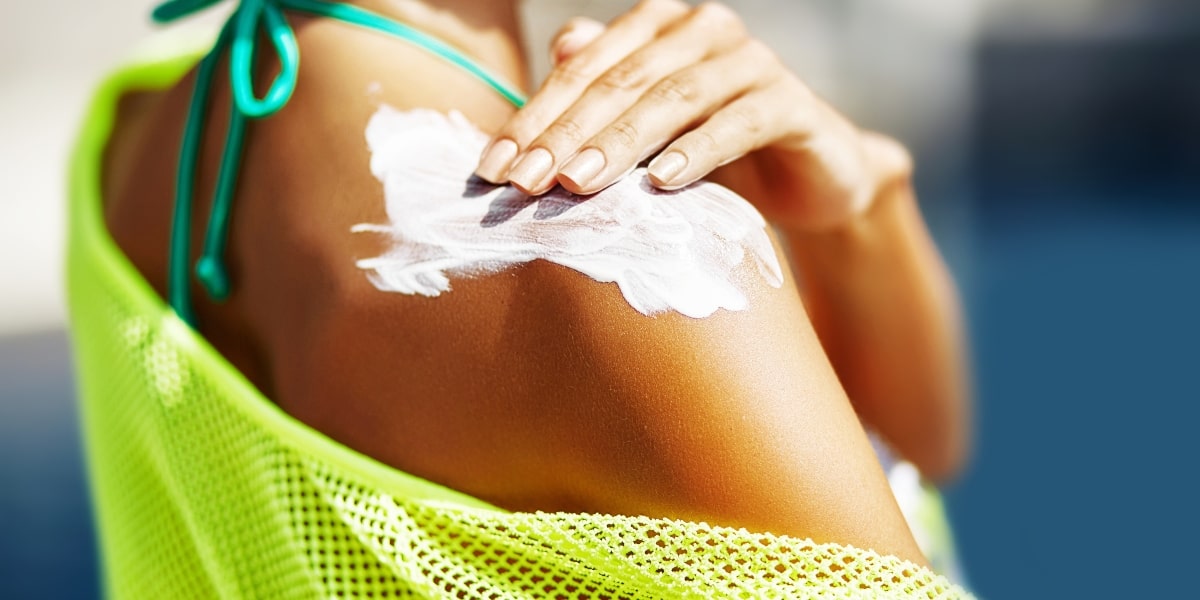Managing Sun Exposure for Maintaining a Youthful Appearance
Do you love the feeling of sunshine on your skin? Of course – we all do! Lounging in the sun is relaxing, and working outside in the sunshine is a lot nicer than working out in the rain.
Nobody wants to burn, of course, as sunburns hurt and can lead to unsightly peeling. While sunburns are extremely common and usually go away by themselves, you should never take sunburn lightly. In fact, you should always keep sun exposure on your mind. Overexposure to the harmful ultraviolet (UV) rays of the sun can cause long-term damage and premature signs of aging, such as sunspots and wrinkles. Overexposure to UV rays can also cause scaly patches, known as actinic keratoses, and skin cancer.
While a tan looks nice, the golden color is actually the result of an injury to the top layer of your skin. UV light speeds up the body’s production of melanin, which is a pigment that gives skin its color. Melanin also protects your skin from the harmful rays of the sun. Exposure to the sun causes your body to produce melanin. Repeated exposure causes the body to produce melanin in high concentrations; in time, melanin can accumulate and clump to cause brown spots, known as age spots.
UV rays from the sun also penetrate the skin, where they damage the collagen and elastin fibers that keep your skin firm and elastic. Damaging these fibers prevents the skin from snapping back into shape, and this loss of elasticity allows wrinkles to develop.
Sunscreen is Essential
Sunscreen blocks out most of the harmful UV rays from the sun. Choose sunscreen products with a sun protection factor (SPF) of at least 15 – some skin doctors recommend using SPF of 30 or higher for full protection. Apply the sunscreen according to the manufacturer’s instructions to uncovered skin 30 minutes before going out. Reapply sunscreen every two hours, or after swimming or perspiring.
Reversing Sun Damage
Fortunately, you can reverse the effects of sun damage to restore the youthful appearance of your skin. A number of products are available, both over the counter and by prescription. Skin doctors and skincare professionals can perform advanced procedures for better, longer-lasting results.
Skin creams
Skin creams and serums containing retinols and retinoids can reduce sunspots, but are messy and require long-term commitments that can get expensive. Products that contain alpha hydroxy acids can help reduce the appearance of fine lines and wrinkles, but also require frequent applications.
Chemical peels
Chemical peels are treatments that remove the top layers of skin to reveal the fresher skin below. The treatment involves applying a chemical that causes the top layers of skin to blister and eventually peel off. Chemical peels are often uncomfortable, and can leave skin feeling raw and sensitive to the sun. The treatment works better on fair skin and fine lines than it does on darker skin or deeper wrinkles.
Red light therapy
Red light therapy can help repair sun damaged skin. Also known as photobiomodulation therapy (PBMT), red light therapy uses the power of light to activate the body’s natural healing processes. More specifically, red light therapy uses specific wavelengths of red and near-infrared light that penetrate various layers of skin tissue to help sun damaged skin heal.
Red light therapy can help treat a wide variety of skin conditions, such as wrinkles, acne, burns, and scars. It works by stimulating and supporting the body’s own healing properties, such as improving circulation, controlling swelling, and boosting energy production within skin cells.
Red light therapy can even reduce the skin’s production of sebum, which is an oily, waxy substance that moisturizes skin but can lead to acne breakouts. Red light therapy can help promote the production of collagen, which helps skin stay firm and supple. PBMT can also reduce skin discolorations resulting from sun damage.
To get the most out of red light therapy, prepare your skin prior to your appointment – be sure to follow any specific instructions provided when you made the appointment. Perform your skincare routine as usual in the days leading up to your appointment. Avoid irritating your skin with aggressive exfoliant products or exposure to the sun. Clean your face with a gentle, non-drying cleanser immediately before your appointment.
Avoid applying sunscreen or makeup with sunscreen before PBMT, as they may block the beneficial light wavelengths produced by the red light device. Do not apply any products containing retinol prior to red light therapy, as combining retinol with PBMT can cause unexpected skin reactions and irritation.
Red light therapy provides a wide variety of benefits for anyone hoping to maintain their youthful appearance. For more information about the benefits of PBMT, contact a red light therapy provider in your area.


